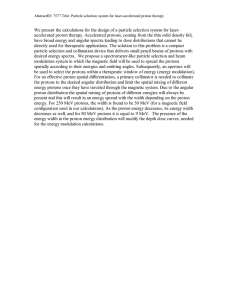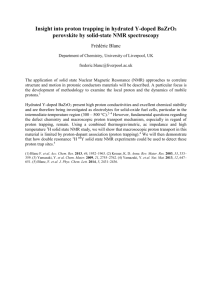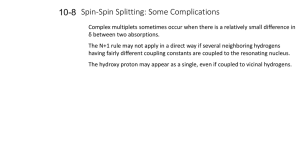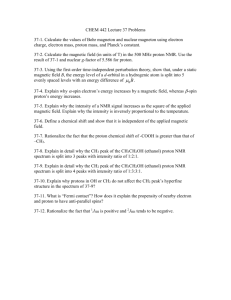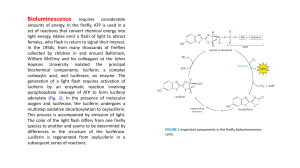Analysis and design of proton transporters. William F. DeGrado
advertisement
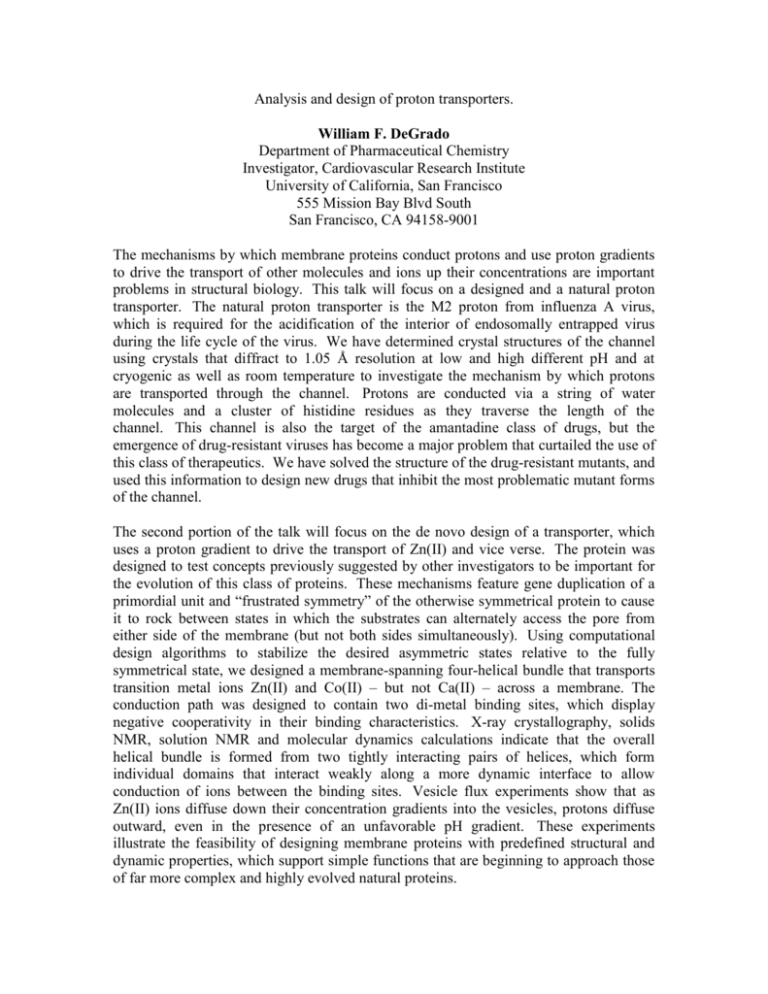
Analysis and design of proton transporters. William F. DeGrado Department of Pharmaceutical Chemistry Investigator, Cardiovascular Research Institute University of California, San Francisco 555 Mission Bay Blvd South San Francisco, CA 94158-9001 The mechanisms by which membrane proteins conduct protons and use proton gradients to drive the transport of other molecules and ions up their concentrations are important problems in structural biology. This talk will focus on a designed and a natural proton transporter. The natural proton transporter is the M2 proton from influenza A virus, which is required for the acidification of the interior of endosomally entrapped virus during the life cycle of the virus. We have determined crystal structures of the channel using crystals that diffract to 1.05 Å resolution at low and high different pH and at cryogenic as well as room temperature to investigate the mechanism by which protons are transported through the channel. Protons are conducted via a string of water molecules and a cluster of histidine residues as they traverse the length of the channel. This channel is also the target of the amantadine class of drugs, but the emergence of drug-resistant viruses has become a major problem that curtailed the use of this class of therapeutics. We have solved the structure of the drug-resistant mutants, and used this information to design new drugs that inhibit the most problematic mutant forms of the channel. The second portion of the talk will focus on the de novo design of a transporter, which uses a proton gradient to drive the transport of Zn(II) and vice verse. The protein was designed to test concepts previously suggested by other investigators to be important for the evolution of this class of proteins. These mechanisms feature gene duplication of a primordial unit and “frustrated symmetry” of the otherwise symmetrical protein to cause it to rock between states in which the substrates can alternately access the pore from either side of the membrane (but not both sides simultaneously). Using computational design algorithms to stabilize the desired asymmetric states relative to the fully symmetrical state, we designed a membrane-spanning four-helical bundle that transports transition metal ions Zn(II) and Co(II) – but not Ca(II) – across a membrane. The conduction path was designed to contain two di-metal binding sites, which display negative cooperativity in their binding characteristics. X-ray crystallography, solids NMR, solution NMR and molecular dynamics calculations indicate that the overall helical bundle is formed from two tightly interacting pairs of helices, which form individual domains that interact weakly along a more dynamic interface to allow conduction of ions between the binding sites. Vesicle flux experiments show that as Zn(II) ions diffuse down their concentration gradients into the vesicles, protons diffuse outward, even in the presence of an unfavorable pH gradient. These experiments illustrate the feasibility of designing membrane proteins with predefined structural and dynamic properties, which support simple functions that are beginning to approach those of far more complex and highly evolved natural proteins.


